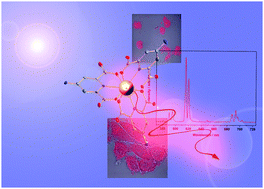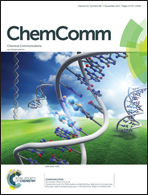Selective cytotoxicity and luminescence imaging of cancer cells with a dipicolinato-based EuIII complex†
Abstract
Four new species [Ln(dipicNH2)3]3− (Ln = LaIII, EuIII, GdIII, TbIII), with the ligand dipicNH22− (dipic = dipicolinato), were synthesized. Incubation of the EuIII complex with glioma NG97 and pancreatic cancer PANC1 cells showed that it penetrates the cell membrane and can be used to image the cells, while also being moderately cytotoxic.



 Please wait while we load your content...
Please wait while we load your content...